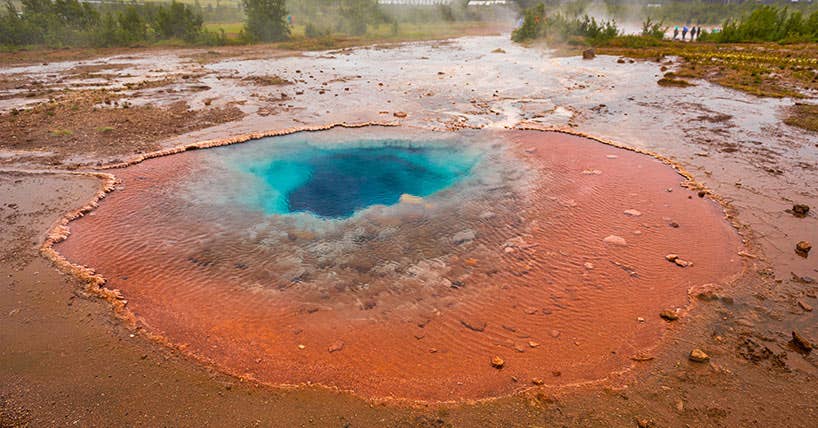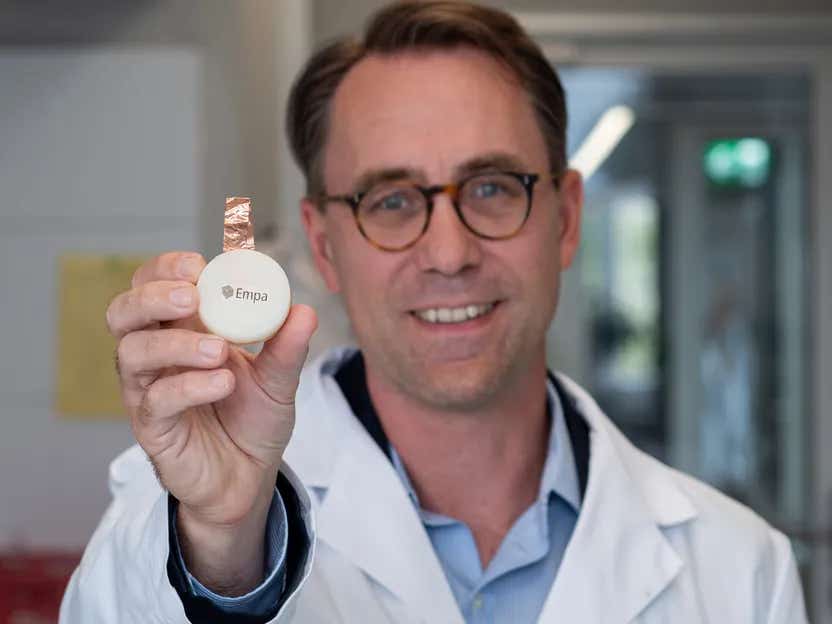Ancient Hot Springs Offer Key Insights to Earth’s Origin of Life
Researchers embarked on a journey back in time to unravel the mystery of how life first emerged on our planet more than 3.5 billion years

[Jan. 16, 2024: JD Shavit, The Brighter Side of News]
The results suggest that the convergence of hydrogen-rich fluids from alkaline hydrothermal vents with bicarbonate-rich waters on iron-based minerals could have precipitated the rudimentary membranes of early cells at the very beginning of life. (CREDIT: Creative Commons)
In a groundbreaking study funded by the UK's Natural Environmental Research Council, scientists at Newcastle University have embarked on a journey back in time to unravel the mystery of how life first emerged on our planet more than 3.5 billion years ago.
Their research takes them to the depths of ancient hot springs, where they recreated the conditions that existed during Earth's primordial days. The findings, published in the prestigious journal Nature Communications Earth & Environment, shed light on a crucial aspect of the origin of life – the creation of organic molecules from inorganic chemicals.
Fatty acids in the early stages of life have long been a subject of intrigue for scientists. These long organic molecules play a pivotal role in forming cell-like structures, but their origin has remained shrouded in uncertainty.
The prevailing hypothesis suggested that these fatty acids may have formed within hydrothermal vents, where hot water mixed with hydrogen-rich fluids from underwater vents combined with seawater containing carbon dioxide (CO2).
Related Stories
To test this hypothesis, the research team meticulously replicated the chemical environment of Earth's early oceans in their laboratory. They carefully mimicked the interplay of hot alkaline water and specific iron-based minerals that would have been present on the primordial Earth.
The results were astonishing – the combination of hot hydrogen-rich fluids with CO2-rich water in the presence of these iron-based minerals yielded the very molecules needed to construct primitive cell membranes.
Dr. Graham Purvis, the lead author of the study, who conducted the research at Newcastle University and is currently a Postdoctoral Research Associate at Durham University, emphasized the significance of their findings.
Results may provide a plausible genesis of the organic molecules that form ancient cell membranes, that were perhaps selectively chosen by early biochemical processes on primordial Earth. (CREDIT: Creative Commons)
He stated, "Central to life's inception are cellular compartments, crucial for isolating internal chemistry from the external environment. These compartments were instrumental in fostering life-sustaining reactions by concentrating chemicals and facilitating energy production, potentially serving as the cornerstone of life's earliest moments."
The study suggests that the convergence of hydrogen-rich fluids from alkaline hydrothermal vents with bicarbonate-rich waters on iron-based minerals may have kickstarted the formation of the rudimentary membranes of early cells, marking the dawn of life itself. Furthermore, this transformative process could have contributed to the creation of specific acids found in the elemental composition of meteorites.
Hydrothermal Vents. The convergence of hydrogen-rich fluids from alkaline hydrothermal vents with bicarbonate-rich waters on iron-based minerals may have kickstarted the formation of the rudimentary membranes of early cells. (CREDIT: Creative Commons)
Dr. Jon Telling, the Principal Investigator and Reader in Biogeochemistry at the School of Natural Environmental Sciences, added his insights, saying, "We think that this research may provide the first step in how life originated on our planet.
Research in our laboratory now continues on determining the second key step; how these organic molecules, which are initially 'stuck' to the mineral surfaces, can lift off to form spherical membrane-bounded cell-like compartments; the first potential 'protocells' that went on to form the first cellular life."
TGA traces of the CO2 and H2O evolved from organic material of magnetite compared to controls following hydrothermal reaction at 90 °C and 16 bar total pressure for 16 h. (CREDIT: Nature Communications Earth & Environment)
Intriguingly, the researchers propose that similar membrane-creating reactions might still be occurring today, beneath the icy surfaces of moons in our solar system. This tantalizing possibility raises the prospect of alternative origins of life in the frigid depths of these distant celestial bodies.
These findings not only shed light on our planet's history but also tantalize us with the possibility that the building blocks of life might exist in the most unexpected corners of our universe, waiting to be discovered by future generations of scientists and explorers.
For more science stories check out our New Discoveries section at The Brighter Side of News.
Note: Materials provided above by the The Brighter Side of News. Content may be edited for style and length.
Like these kind of feel good stories? Get the Brighter Side of News' newsletter.
Joshua Shavit
Science & Technology Writer | AI and Robotics Reporter
Joshua Shavit is a Los Angeles-based science and technology writer with a passion for exploring the breakthroughs shaping the future. As a contributor to The Brighter Side of News, he focuses on positive and transformative advancements in AI, technology, physics, engineering, robotics and space science. Joshua is currently working towards a Bachelor of Science in Business Administration at the University of California, Berkeley. He combines his academic background with a talent for storytelling, making complex scientific discoveries engaging and accessible. His work highlights the innovators behind the ideas, bringing readers closer to the people driving progress.



